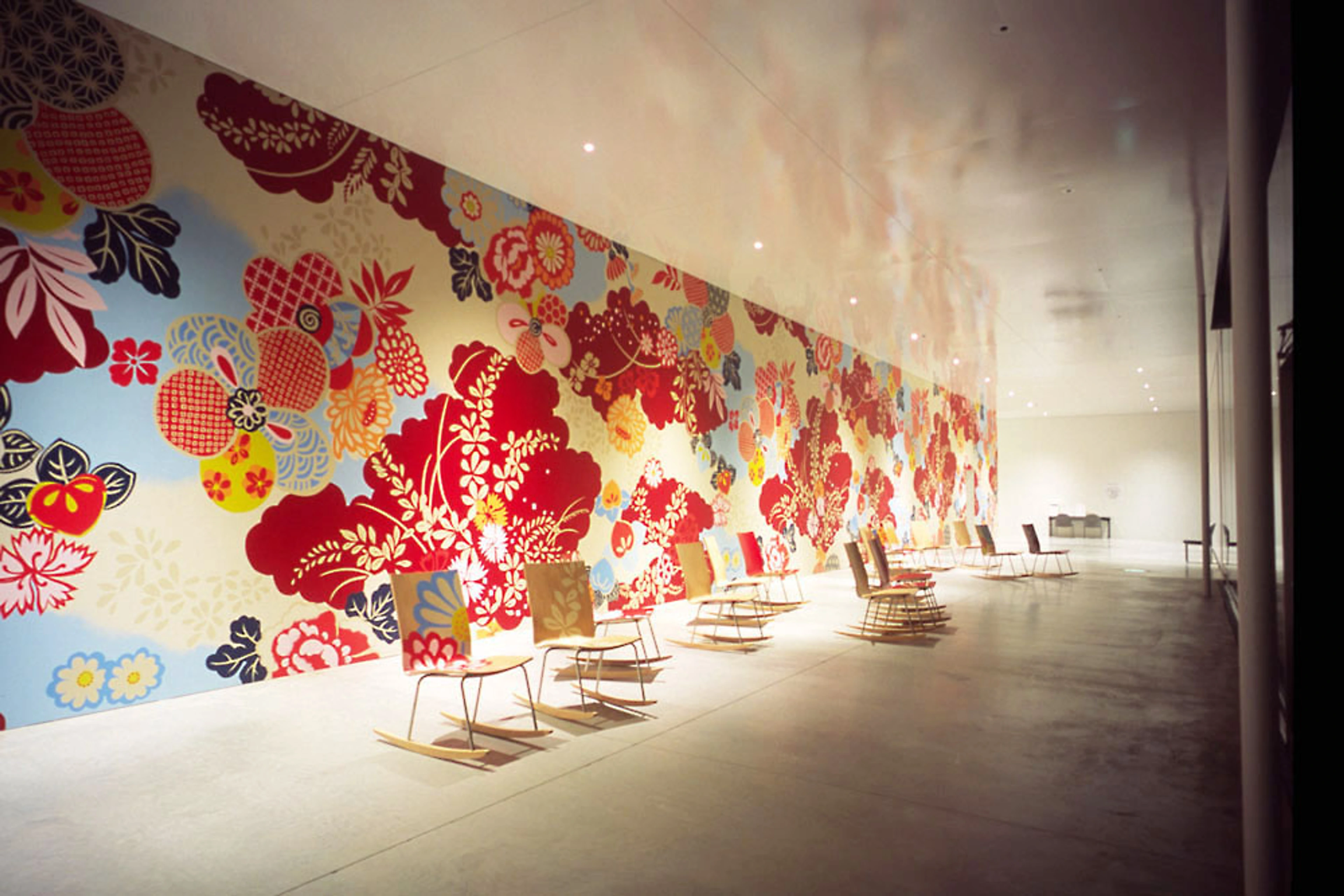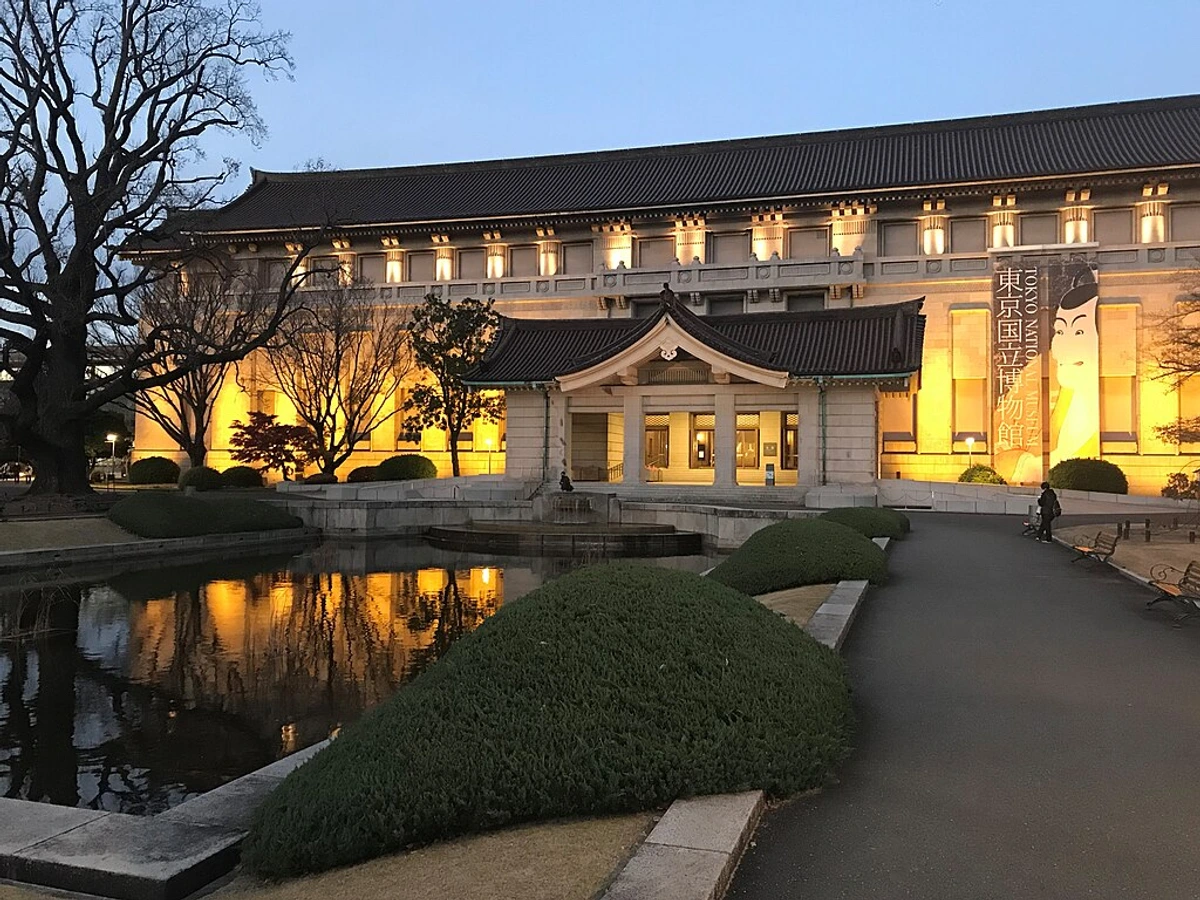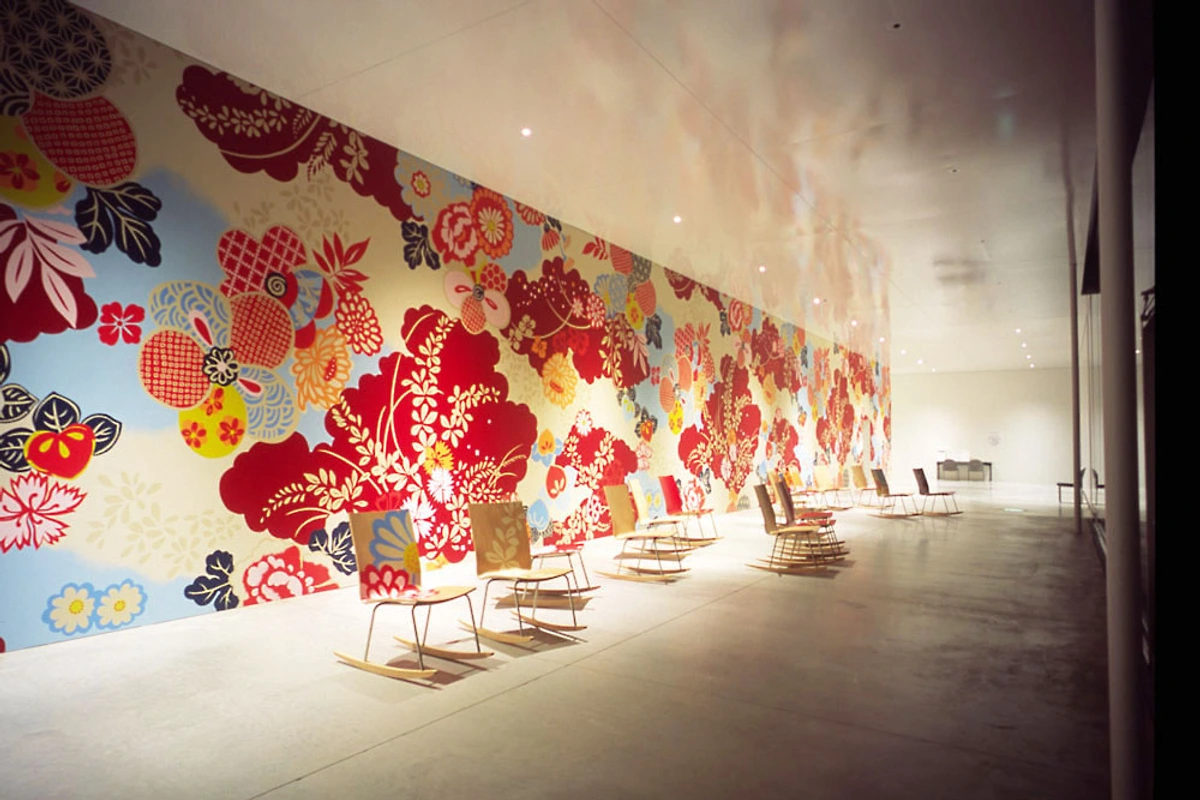
Best Art Galleries & Museums in Japan: Your Ultimate Guide
Dive into Japan's incredible art scene! This ultimate guide, packed with personal insights, covers must-visit galleries & museums in Tokyo, Kyoto, Naoshima, and beyond, plus practical tips for planning your art adventure.
Best Art Galleries & Museums in Japan: Your Ultimate Guide
Japan. Just the name conjures images – neon-drenched cityscapes, serene temples, maybe even a certain kind of animated cat-bus if you're like me. But beyond the stereotypes lies an art scene so dynamic, so utterly alive, it can feel overwhelming. Where do you even begin? It's like being handed a menu with a thousand delicious options when all you wanted was a simple recommendation.
I remember staring at maps, lists, and travel blogs, my brain doing the digital equivalent of buffering. It felt like trying to grasp smoke – so much beauty, so many possibilities, but how to actually touch it? I pictured myself wandering through a quiet Kyoto temple garden one morning, feeling the weight of centuries, then being catapulted into a dazzling, interactive digital installation in Tokyo that same afternoon. The sheer contrast, the potential for sensory overload (in the best way!), was both exhilarating and slightly terrifying. So, consider this your friendly guide, born from that delightful confusion and the dream of navigating those contrasts. We'll navigate the must-sees, the hidden gems, and why Japan's art landscape is something truly special, blending centuries of tradition with the hyper-modern pulse you feel walking through Shibuya Crossing.
Why Japan's Art Scene is Unmissable: A Dance of Old and New
It's easy to think of Japanese art purely in terms of woodblock prints or delicate calligraphy. And yes, that rich history of art is foundational, a deep wellspring of aesthetic principles like wabi-sabi (finding beauty in imperfection) or ma (the powerful use of empty space). But what makes Japan electrifying now is how that tradition crashes, blends, and dances with cutting-edge contemporary art. You'll find ancient techniques informing modern installations, traditional motifs appearing in digital art, and contemporary artists drawing directly from historical aesthetics. Think of the Gutai group, post-war pioneers who shattered traditional boundaries, yet whose emphasis on the artist's physical interaction with materials echoes ancient craft traditions. Or consider how the meticulousness seen in a perfectly raked Zen garden translates into the painstaking detail of a contemporary sculpture or the precision of digital art programming. It’s this fusion – the quiet reverence for craft and the bold experimentation – that makes exploring Japanese art feel like uncovering layers of meaning and beauty. It’s not just about seeing; it’s about experiencing.
Navigating the Japanese Art Landscape: Galleries vs. Museums
Okay, let's get practical. You'll encounter both art galleries and art museums in Japan, and knowing the difference helps tailor your trip. Think of it like choosing between a curated tasting menu (museum) and exploring a vibrant food market (gallery district). Both offer incredible experiences, just different flavours. Mix and match for a well-rounded art adventure!
- Museums: Often larger institutions, frequently government-funded, showcasing broader collections – historical artifacts, established modern masters, major retrospectives. Think Tokyo National Museum or the National Art Center. They provide context, history, and often, stunning architecture.
- Galleries: Typically smaller, often commercial spaces (what is an art gallery? We have a whole guide on that!). They focus on contemporary artists, often showcasing new or emerging talent. Visiting gallery districts like Ginza or Roppongi in Tokyo lets you hop between diverse shows, discovering artists you might not find elsewhere. These are often the places where you can actually buy art, maybe even find a piece that speaks to your own journey, like the ones I create in my studio (see my timeline or art for sale).
Tokyo: The Epicenter of Contemporary Cool
Let's be real: Tokyo is the beating heart of Japan's contemporary art scene. It's vast, energetic, and packed with world-class institutions and cutting-edge galleries. If you only have time for one city, Tokyo offers an incredible density of art experiences. Check out our dedicated guide to Contemporary Art in Tokyo for an even deeper dive.
Must-Visit Galleries & Museums in Tokyo
- Mori Art Museum: Perched atop Roppongi Hills, it offers stunning city views alongside consistently excellent contemporary art exhibitions from Japan and around the world. They often host large-scale, thematic shows that are truly immersive. The late opening hours are a bonus.
- Tokyo National Museum: Located in Ueno Park, this is Japan's oldest and largest museum. Essential for understanding the breadth of Japanese art history, from samurai armour and exquisite Buddhist sculptures to iconic ukiyo-e prints. Don't miss the Honkan (Japanese Gallery) for a deep dive into the nation's artistic heritage.

- The National Art Center, Tokyo: Also in Roppongi, this architectural marvel by Kisho Kurokawa doesn't have a permanent collection but hosts fantastic special exhibitions covering various genres and periods. Its undulating glass facade and striking interior design alone are worth the visit – it feels like walking through a wave of art.
- teamLab Borderless & Planets: While technically digital art installations rather than traditional galleries, the teamLab experiences in Tokyo are unmissable contemporary phenomena. Borderless (in Odaiba) is a vast, interactive digital universe where art moves between rooms, while Planets (in Toyosu) offers a more immersive, sensory journey. They are incredibly popular and exemplify the cutting edge of digital art.
- Ghibli Museum (Mitaka): Okay, technically animation, but Studio Ghibli's artistry is undeniable and culturally significant. It's a whimsical, magical experience that feels like stepping into one of Miyazaki's films. But a crucial tip: book tickets months in advance – they sell out instantly! Seriously, set a reminder.
- Gallery Districts: Exploring smaller galleries is where you find the pulse of the current scene. Tokyo has several key areas:
- Ginza: Traditionally known for established, high-end galleries showcasing a mix of modern and contemporary Japanese and international artists.
- Roppongi: Home to major museums (Mori, National Art Center) and a concentration of contemporary galleries like Taka Ishii Gallery and Ota Fine Arts, often featuring cutting-edge work.
- Kiyosumi-Shirakawa: A more relaxed area with converted warehouses housing significant contemporary galleries like SCAI The Bathhouse (cleverly housed in a former public bath!) and the Museum of Contemporary Art Tokyo (MOT). It feels a bit more industrial-chic.
Beyond Tokyo: Art Islands, Ancient Capitals, and Regional Gems
While Tokyo is magnetic, some of Japan's most unique and profound art experiences lie further afield. Escaping the city buzz for these destinations offers a different, often more integrated, encounter with art, where the landscape itself becomes part of the canvas.
Naoshima: Where Art Meets the Sea
Naoshima, along with neighbouring islands Teshima and Inujima in the Seto Inland Sea, is legendary. It's an entire landscape transformed into an art project, a vision brought to life by the Benesse Holdings. Think world-class architecture by Tadao Ando housing works by Monet, James Turrell, and Walter De Maria (Chichu Art Museum), installations integrated into old village houses (the Art House Project, where artists have transformed vacant homes into permanent site-specific artworks), and museums blurring the line between accommodation and exhibition space (Benesse House Museum). It requires planning, ferry rides, and maybe even renting a bicycle, but the experience of art integrated with nature, architecture, and community is utterly unforgettable. It's a place that makes you slow down and feel the art in its environment.
Kanazawa: Samurai History and Modern Masterpieces
Kanazawa, on the coast of the Sea of Japan, beautifully balances its rich samurai and geisha district history with a vibrant contemporary scene. It's a city where you can wander through beautifully preserved Edo-era streets in the morning and step into a cutting-edge museum in the afternoon. The star is the 21st Century Museum of Contemporary Art, Kanazawa, famous for its circular, transparent design and interactive installations like Leandro Erlich's "Swimming Pool," which creates the illusion of being underwater. But Kanazawa also boasts excellent museums dedicated to traditional crafts like Kutani pottery and Kaga Yuzen silk dyeing, showcasing the deep roots of Japanese artistry.

Kyoto: The Soul of Traditional Arts (and Quiet Contemporary)
No exploration of Japanese art is complete without Kyoto. While Tokyo buzzes with the new, Kyoto holds the soul of the old. Here, art is woven into the fabric of daily life – in the architecture of temples and shrines, the meticulous design of gardens, the artistry of a tea ceremony, and the skill of traditional craftspeople. Visit the Kyoto National Museum for historical treasures, explore smaller museums dedicated to specific crafts like ceramics or textiles, or simply wander through neighbourhoods like Gion or Arashiyama, appreciating the aesthetic principles that have shaped Japan for centuries. Kyoto also has a growing, albeit quieter, contemporary scene, often found in smaller galleries or integrated into traditional spaces, offering yet another fascinating blend.
Osaka: An Emerging Contemporary Hub
Often seen as Tokyo's more down-to-earth sibling, Osaka has a burgeoning contemporary art scene that's worth exploring if you're in the Kansai region. The National Museum of Art, Osaka, houses significant post-war and contemporary collections, while areas like Kitahama and Nakanoshima are seeing new galleries and art spaces emerge. It might not have the sheer volume of Tokyo, but Osaka offers a chance to discover exciting artists in a city known for its vibrant culture and incredible food.
More Than Just Galleries: Diverse Art Forms to Explore
Japan's visual culture extends far beyond the walls of museums and galleries. To truly appreciate the artistry, keep an eye out for:
- Traditional Crafts: From the exquisite ceramics of Arita and Imari to intricate textiles, lacquerware, and metalwork, Japan has a profound heritage of craftsmanship. Visiting regional centers or specialized museums offers a window into these living traditions.
- Architecture: Japanese architecture, both traditional and modern, is an art form in itself. The minimalist elegance of a Zen temple, the innovative designs of contemporary architects like Tadao Ando (again!) or Kengo Kuma – the buildings themselves are often masterpieces.
- Street Art & Manga/Anime: In cities like Tokyo and Osaka, you'll find vibrant street art scenes, particularly in areas like Shibuya or Harajuku. And the global phenomenon of manga and anime is a powerful contemporary visual force, influencing everything from fine art to fashion. Don't dismiss it – its cultural impact and artistic skill are undeniable.
Practical Tips for Your Japanese Art Journey
Planning an art-focused trip to Japan can feel daunting, but a little preparation goes a long way. Here are a few tips I've gathered (or wished I'd known!):
- Booking is Key: For popular spots like the Ghibli Museum, teamLab installations, and major temporary exhibitions, book tickets online well in advance. Some require booking months ahead, often on specific release dates.
- Transportation: Japan's public transport is famously efficient. The Shinkansen (bullet train) connects major cities, making it easy to travel between Tokyo, Kyoto, and Osaka. For art islands like Naoshima, factor in ferry schedules.
- Timing: Consider visiting during major art events like the Setouchi Triennale (held every three years on the art islands) or Tokyo Art Week. Spring and Autumn offer pleasant weather for exploring, but also peak tourist crowds. Check museum websites for temporary exhibition schedules before you go.
- Museum Etiquette: Generally, be quiet and respectful. Photography rules vary – check signs or ask staff. Don't touch the artwork (obvious, but worth stating!).
- Opening Hours & Days: Museums and galleries often have specific closing days (often Mondays) and can have shorter hours than you might expect. Always check their official websites before planning your visit.
Planning Your Art Itinerary
So, how do you stitch this all together? A classic first trip might focus on Tokyo (contemporary buzz, major museums) and Kyoto (traditional arts, historical sites). If you have more time, adding Naoshima offers a completely different, immersive experience. Osaka is a great addition for more contemporary art and vibrant city life in the Kansai region. Don't try to see everything – pick a few key experiences that resonate with you and allow time for wandering and unexpected discoveries. Sometimes the most memorable art isn't in a famous museum, but in a tiny local gallery or a piece of street art that catches your eye.
Conclusion: The Layers of Japan's Art Scene
Exploring the art of Japan is a journey through time and culture, a constant dialogue between the ancient and the avant-garde. It's a place where a centuries-old tea bowl can feel as profoundly moving as a cutting-edge digital installation, and where the quiet beauty of a garden informs the bold lines of contemporary architecture. It can feel overwhelming at first, like that menu with a thousand options, but with a little guidance and an open mind, you'll find your own path through this incredible landscape. Whether you're drawn to the serene elegance of traditional crafts, the explosive energy of Tokyo's galleries, or the unique fusion of art and nature on the Seto Inland Sea, Japan offers an art experience unlike any other. So go, explore, get a little lost, and let the art of Japan speak to you. You might just find something that stays with you long after you've returned home.




